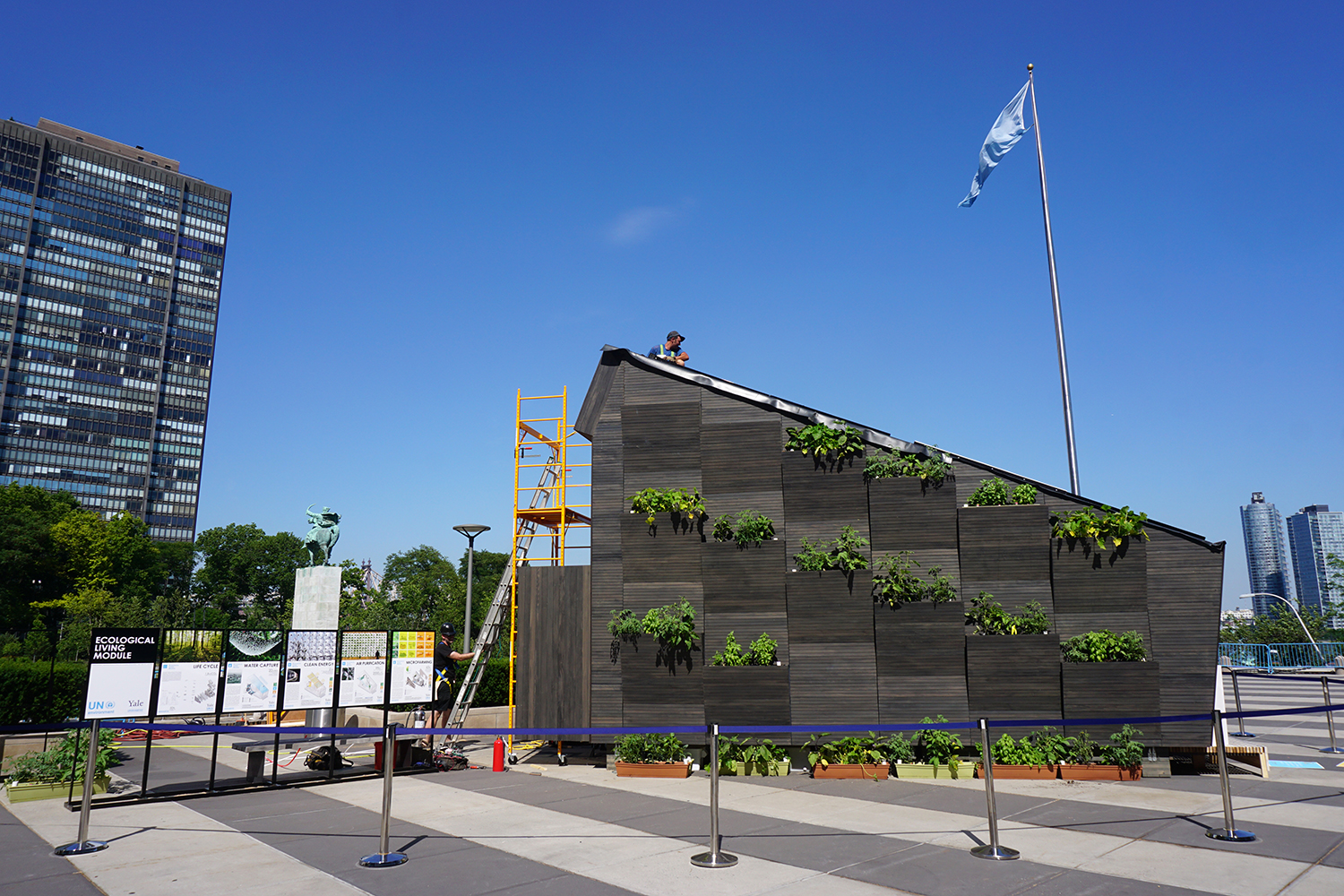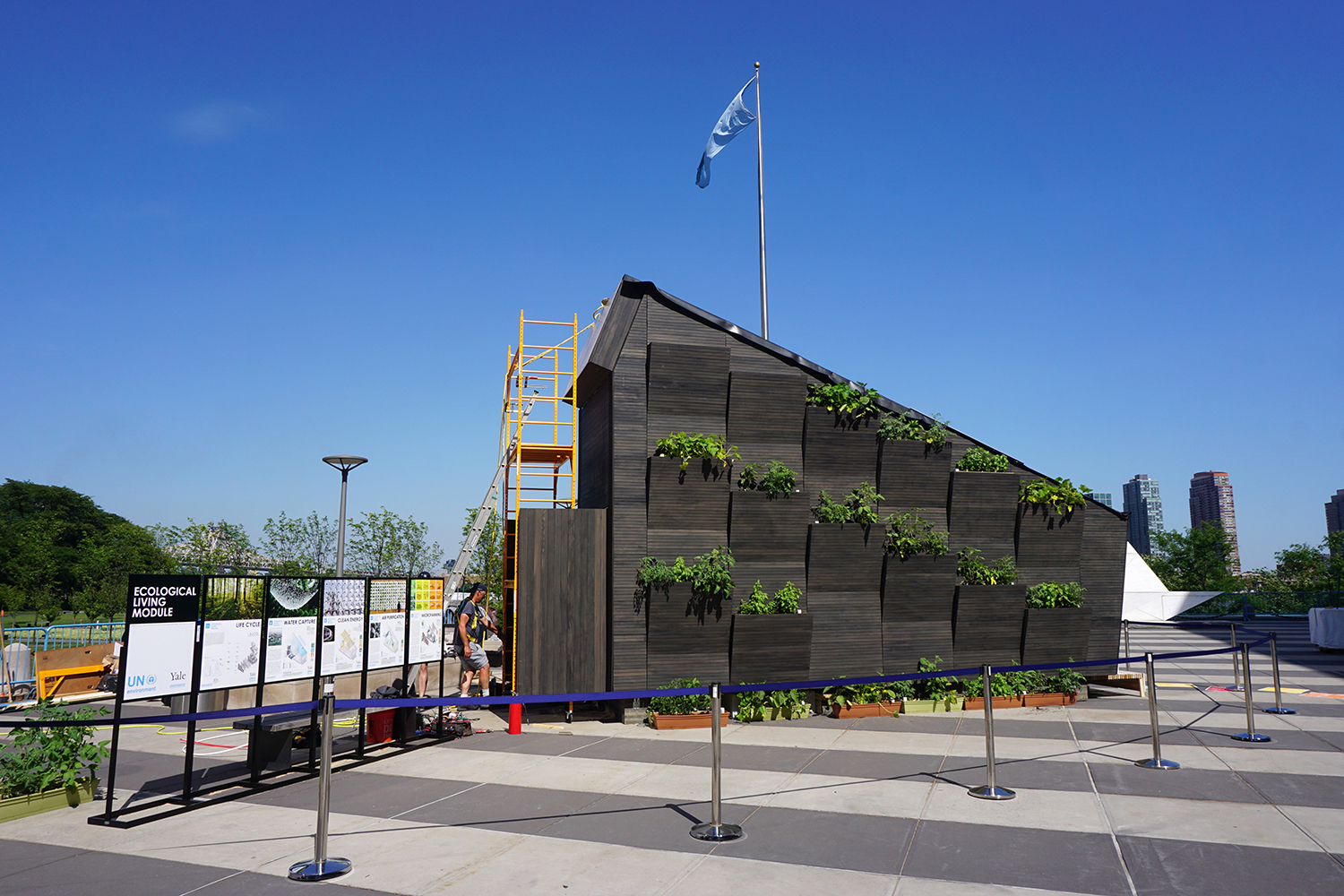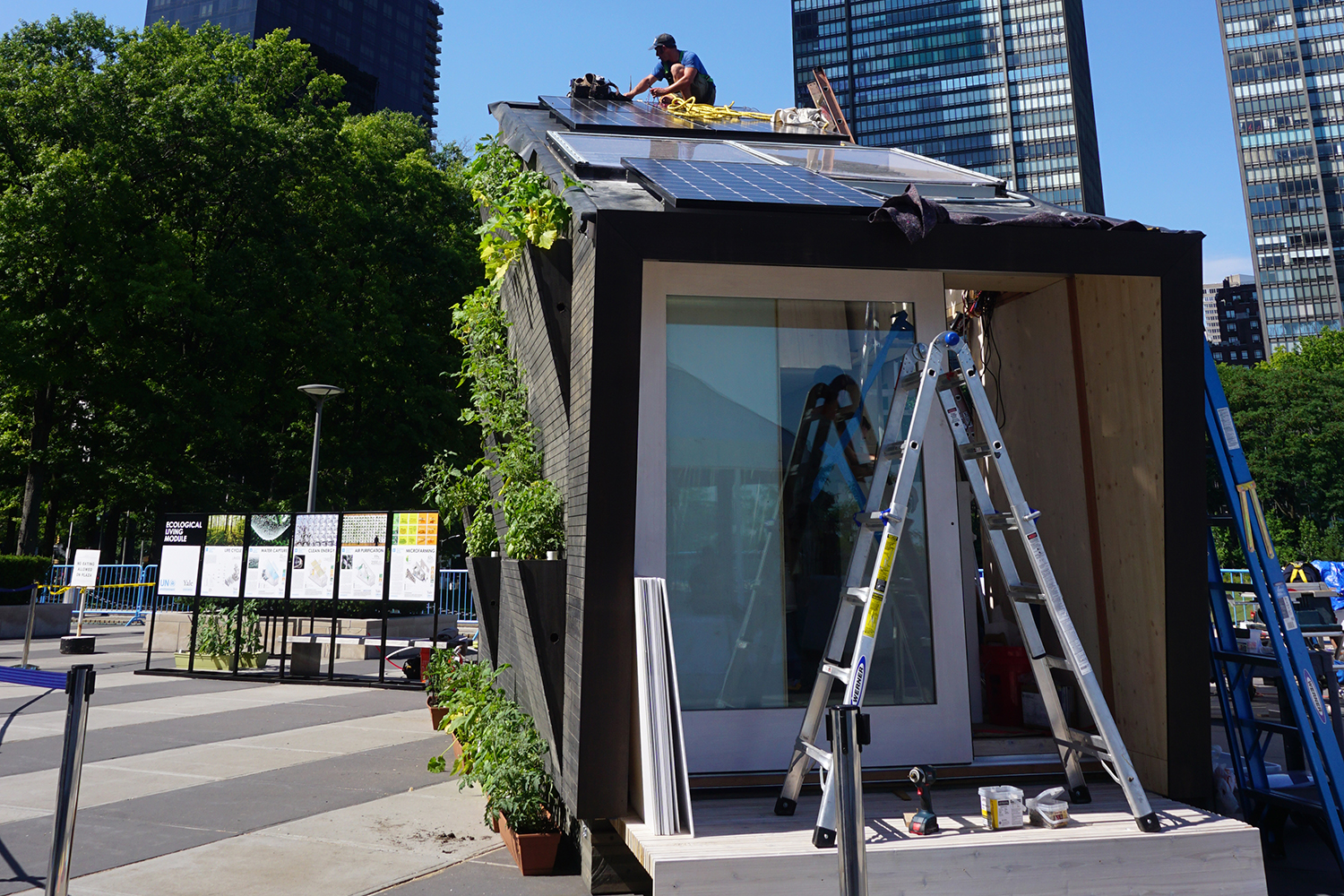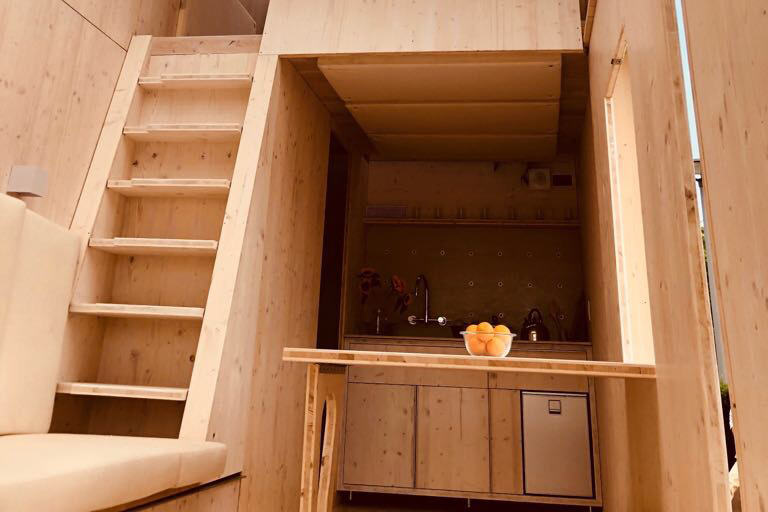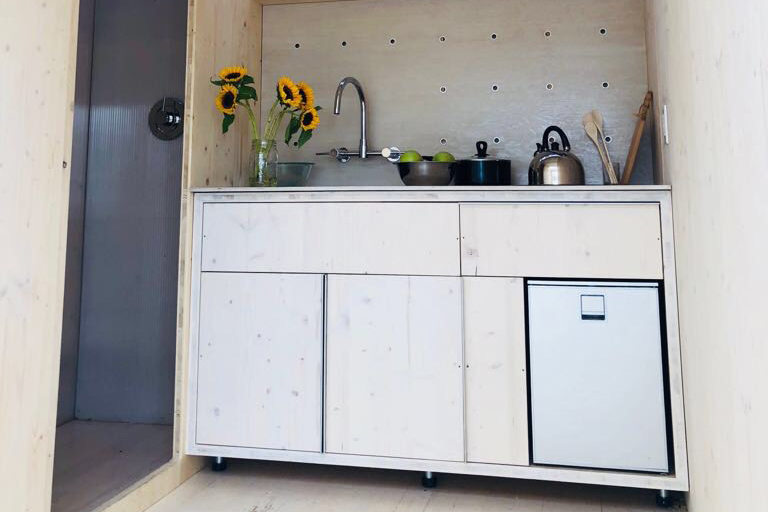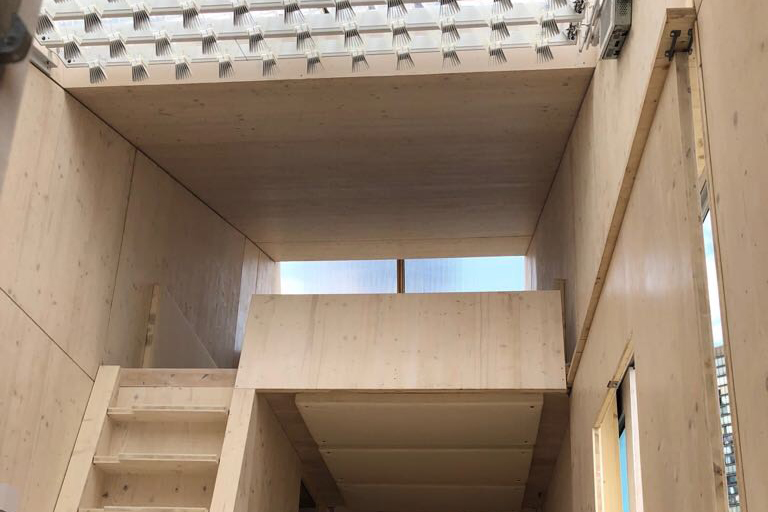More than 7.6 billion people currently inhabit the Earth, each one an eating, breathing, space-occupying bundle of atoms. By the year 2050, experts estimate that the global population will rise by more than a quarter, bringing the total to around 9.7 billion people. That is a lot of mouths to feed and a lot of bodies to find shelter for. Already, around a billion people live in shoddy settlements, while many more reside in structures that aren’t environmentally friendly.
In an effort to design more sustainable and affordable housing for future populations, the United Nations and Yale University recently teamed together and created the Ecological Living Module, a roughly 240-square-foot tiny house, which they designed to test ways to minimize water and natural resource use.
“We clearly need more housing but the key thing is that we also need smarter housing” Erik Solheim, head of the United Nations environment program, UN Environment, said. “The housing sector uses 40 percent of the planet’s total resources and represents more than a third of global greenhouse gas emissions. So making them more efficient will benefit everyone and it’ll mean lower bills, too. Innovations like the Ecological Living Module are what we need more of.”
Constructed mainly from locally sourced, renewable materials, the Ecological Living Module is powered entirely by renewable energy. Using built-in technology, the structure has its own solar energy generation system, on-site water collection setup, basic agricultural infrastructure for growing greens, and plant-based air purification system. The unit is designed to let in natural light to lessen its energy demand, and is capable of being modified for living and working. It can accommodate up to four people, albeit in rather tight quarters.
The Yale Center for Ecosystems in Architecture worked with Gray Organschi Architecture to design and fabricate the house.
“Adequate housing is at the heart of sustainable urbanization,” said Maimunah Mohd Sharif, executive director of UN Habitat, the UN’s human settlements program. “The use of proper building materials, better planning, and improved construction techniques can make energy use in buildings more efficient. If adopted widely, this practice can create jobs and prosperity with lower greenhouse gas emissions.”
A prototype of the Ecological Living Module is on display in the UN Plaza in New York City through July 18. Future models will be designed to adapt to local climatic and cultural contexts.

